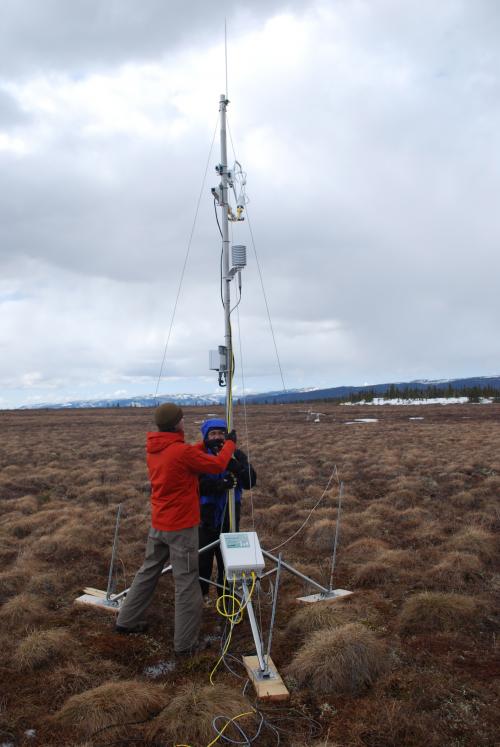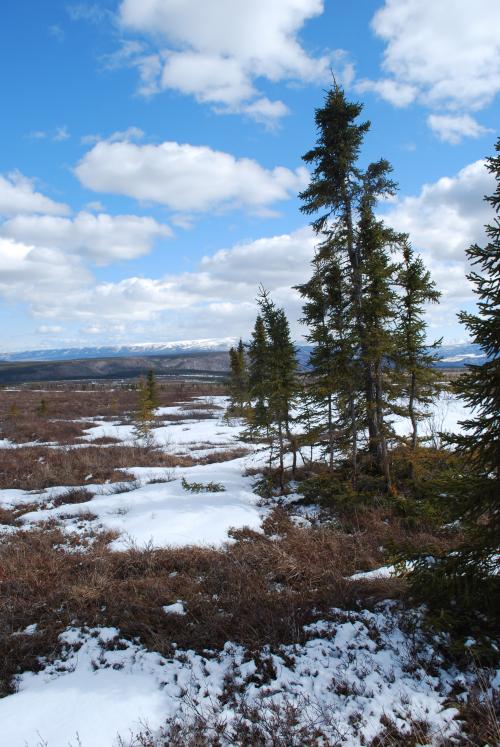
After snowing a fair amount last evening the morning was clear and nice. A new light carpet of snow covered everything and made the tundra look white. Most of it was gone by noon. We worked today on getting Site B up and running, but we made little progress. There seems to be an electrical problem with one part of the brain that controls the chambers. We are working on that tonight and will try again tomorrow.
We did have to go over to the Gradient Site to visit Christian and Rosvel. They have been working on the Eddy Tower. This tower measures the temperature and the carbon dioxide concentration over a large area. This data shows the general pattern of CO2 over the tundra and can give specific information about which areas may be high or low. We will talk more about that later.

I want to begin talking about the Carbon Cycle in general and how it works in the subarctic tundra here. The diagram above was taken from our textbook (pg. 419].
Carbon is important to life on earth as a building block of living material and energy. Carbon makes many compounds, one of which is Carbon dioxide. Carbon dioxide is found in the atmosphere where it is one of many gases that help to naturally warm the planet. Producers, such as plants, take in carbon dioxide gas during photosynthesis and use the carbon to make its own food as sugars. This process also releases oxygen to the atmosphere. The plants also need the water and sunlight for this process, and nutrients from the soil. Consumers, such as animals, come along and eat the producers to gain the carbon for building tissue and for energy. But to get the energy, the animals' body must break down the sugars during the process of respiration. This releases Carbon dioxide and water, which are both waste products to the animal. The plants then take in the Carbon dioxide and give off Oxygen. Decomposers in the soil also release Carbon dioxide to the air but also turn some of that carbon in to solids that remain in the ground.
There are also other factors that can change the amount of carbon in the atmosphere. Activities such as burning fossil fuels, oil and gas or coal, can release Carbon dioxide gas. Remember that the fossil fuels are really the remains of dead organisms, and have loads of carbon in them.
Also, when trees are cut down for lumber and paper products or just to clear land for buildings and towns, Carbon dioxide levels in the air can go up! Remember that the plants are taking in the Carbon dioxide, so less plants take in less Carbon dioxide from the air. If people burn trees to clear areas, then that is twice the factor! Carbon from the trees is released in the burning but not taken in because the trees are gone.
In the tundra, this carbon cycle plays the same role. One difference is the temperature. The cold slows the decomposition in the soil. Carbon is broken down more slowly and stored in the soil over long periods of time. It is estimated that the tundra areas in the world today contain twice as much carbon in the ground as there is in the atmosphere. Warming these tundra areas could release large amounts of carbon dioxide in to the air.



Comments